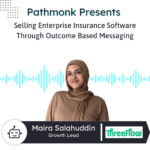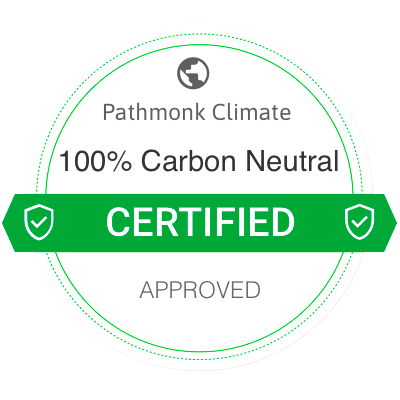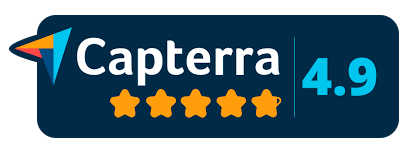
Introduction
Join us on Pathmonk Presents with Sarah Stapleton, Marketing Director at QC Ware, a pioneer in quantum computing solutions.
Sarah discusses how QC Ware’s Prometheum platform accelerates molecular discovery for pharmaceutical and chemical industries.
She shares insights on blending digital and traditional B2B marketing, optimizing website funnels for niche audiences, and leveraging SEO to attract chemists and executives. Learn tips for keeping websites simple and readable to boost conversions, plus the value of face-to-face networking at Q2B events.
Tune in for actionable strategies to drive innovation and inspire cutting-edge marketing!
Increase +180%
leads
demos
sales
bookings
from your website with AI
Get more conversions from your existing website traffic delivering personalized experiences.
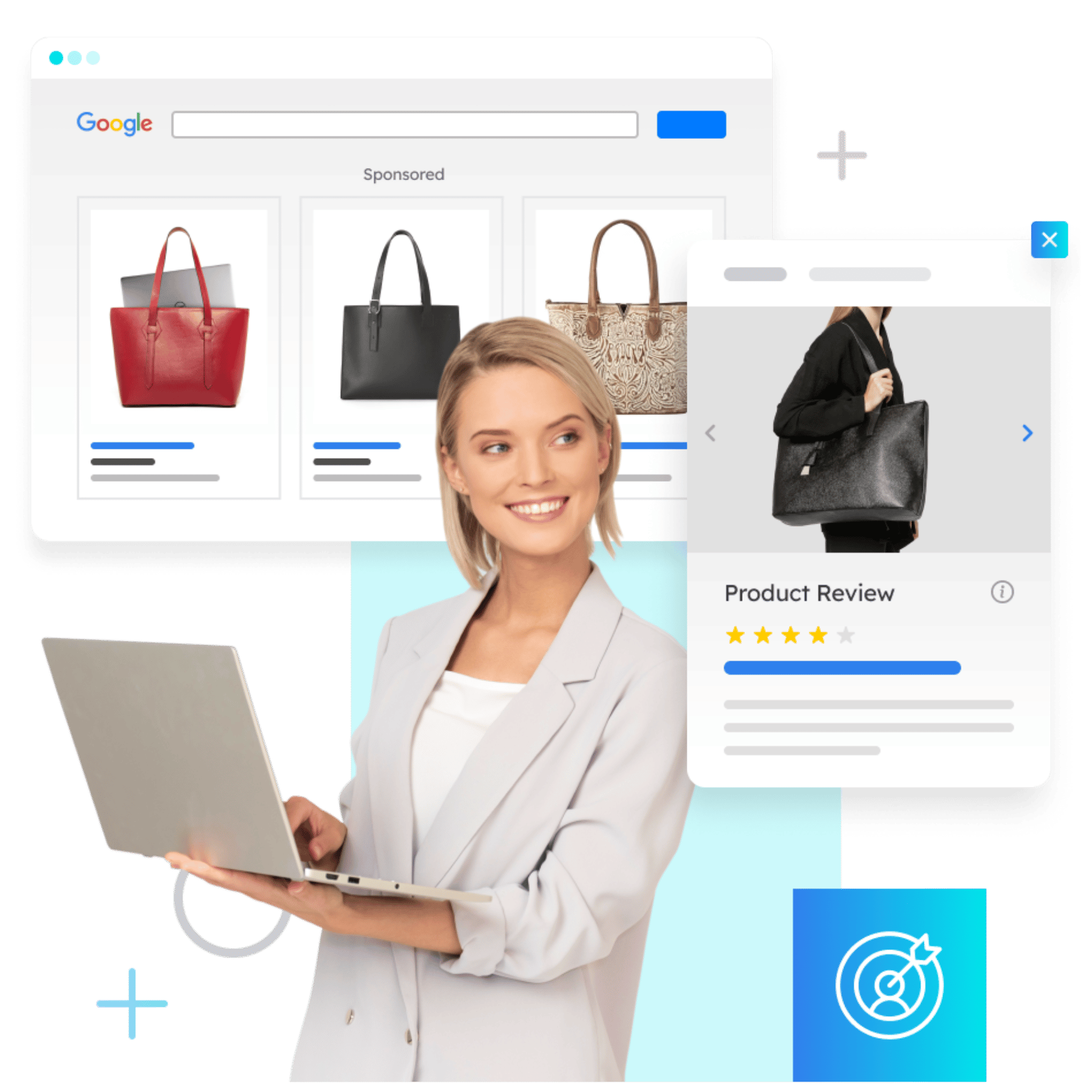
Rick: Pathmonk is the AI for website conversions. With increasing online competition, over 98% of website visitors don’t convert. The ability to successfully show your value proposition and support visitors in the buying journey separates you from the competition online. Pathmonk qualifies and converts leads on your website by figuring out where they are in the buying journey and influencing them in key decision moments with relevant micro experiences like case studies, intro videos, and much more. Stay relevant to your visitors and increase conversions by 50% by adding Pathmonk to your website in seconds, letting the AI do all the work and increase conversions while you keep doing marketing. Check us out on Pathmonk.com.
Alright everyone, welcome back to today’s episode of Pathmonk Presents. Today we are joined by Sarah Stapleton. She’s the marketing director at QC Ware. Sarah, welcome to the show.
Sarah Stapleton: Thank you. I’m glad to be here.
Rick: Of course, glad to have you. So I want to start with the basics, Sarah, if you don’t mind. I want to know what’s the big idea behind QC Ware, and if you were explaining it to a friend over coffee, how would you describe what you do?
Sarah Stapleton: So at its heart, QC started as a quantum computing SaaS company. We are really on the cutting edge of computer technology, right? We have some classical computing hardware, we have algorithms that are targeting quantum hardware, and we have a flagship SaaS platform for advanced molecular discovery using basically quantum chemistry to help pharmaceutical companies, material science companies, and chemical companies accelerate their research using our chemistry simulation platform. We also have this third branch of our company that organizes a global event called Q2B. It is for the quantum computing industry. We have three events every year. We just finished up our Tokyo event actually, and we’ll be gearing up for Paris here soon. So that’s, in a nutshell, our company as a whole.
Rick: All right. Exciting times. And look, I’m not going to pretend—when it comes to quantum computing, I know zero. But I’m glad there are companies out there advancing our civilization, if you will, in terms of being able to understand it more and having services and software that are able to use that, if that makes sense. But I’m curious, are there certain types of industries specifically where you feel your product really shines at the moment?
Sarah Stapleton: Yeah, so for our main product, which is Prometheum—our software SaaS application—that is really great for anybody doing discovery chemistry in the pharmaceutical industry or doing computational chemistry or other types of chemistry in, say, oil and gas companies, materials companies, chemical companies—those kinds of industries. Basically, anybody who’s doing that chemistry calculation type of work.
Rick: Got it. Okay. And I’m curious, how do people discover you? I guess in a way I want to understand a little bit more about your ICP, if you will—if you want to keep the marketing lingo going—but your ideal customer profile, right? Who within the company is going to be looking for software like yours, and how do they find you?
Sarah Stapleton: So usually, it’s either going to be a high-level VP of innovation or a director in some sort of capacity in that way. In a smaller company, it might be a CEO or a VP of partnerships or vendors or something like that. But we also go direct to our actual end user, which would be chemists themselves. Sometimes it is a chemist advocating for the platform upwards. Sometimes it is somebody at the top getting their team invested in the platform from top down. So it ranges. And then as far as how we find our customers or they find us, it’s either through digital marketing—of course, which is essential these days. I don’t know how anybody does business without digital marketing. And then we also attend quite a few events throughout the year, where we can network with people in person. They can see our booth, and we can have those face-to-face chats, which are still really important.
Rick: Yeah, of course. And that’s one of the things I would expect from a company like yours, especially when you work within the medical industry, let’s say. There is still a lot of face-to-face—a lot of shaking hands—which is a great thing, I think. That human connection you make at those events, even if it’s just about business, is incomparable. But I also want to touch on, obviously, for the people that don’t do those things and end up on your website—how much of a role does your website play when it comes to pulling in your clients? And is there anything you think really works at the moment or maybe anything you’ve got your eye on improving?
Sarah Stapleton: Yeah, our website is a huge part of our overall strategy in bringing people in. We have really been developing our SEO on the platform so that when people are searching—because we’re in such a niche, right? We’re in this very specific area. When people are out in the world searching those terms or searching for products similar to ours, we want to be showing up for them. So our website is a key essential piece of that. Developing our SEO to be targeting those very niche customers and very niche search terms is really important for us. Our website has been developed to funnel people to the correct path. QC Ware has its quantum computing side, then you can funnel into Prometheum if you want the software side, and then you can funnel into Q2B if you want to attend an event. Once you’re in the correct pathway, it starts another funnel of trying to generate leads that we can then pass onto the sales team. Our website is integrated with HubSpot so we can do that lead development and lead nurturing internally once those people come in from the website.
Rick: Interesting. You mentioned the lead gen side of things because my follow-up was actually about your learnings—let’s say about what makes a website convert. You can draw from your experience anywhere, really, but if you want to talk about QC Ware—what tools, tips, or tricks could you recommend when it comes to making a website convert?
Sarah Stapleton: So I used to teach digital marketing bootcamps for several different universities, and one of the things I would tell my students is that you need to keep it as simple as you possibly can. A second grader should be able to navigate your website. One of the things I feel like a lot of marketers don’t focus on, or maybe forget or don’t know, is that readability plays a huge part in everything that we do as marketers. The average reading level in the United States is about sixth or seventh grade, so it’s much lower than most people assume. Now, in industries like mine where we’re talking about PhD-level scientists and things, we can get away with a little bit more high-level conversation. But the majority of marketing in general should be kept at a very low reading level so that people can find what they’re looking for and understand it easily. From my perspective, most marketing that is hyper-successful, that goes viral, that makes a website really shine, is keeping that reading level extremely low. Short sentences, big bold text where you want them to go—there should never be any sort of hesitation when somebody gets to your website about where to go if they want to contact you. It should be bright and in the corner. I should be able to find that easily. If I want to read more about a product, I should be able to do that right from the product page. If I, as the marketer, want somebody to click in a certain place or scroll in a certain way, I need to intentionally, in the UX, design that into the website. We have to give our customer the path we want them to take, because the minute they hesitate is the minute we might potentially lose them and send them off the site.
Rick: Yeah, that’s a good point. Great point about the readability of things. I have a background in UX, and anyone—even in marketing—will know the F-pattern, where people read. It’s basically in an F-shaped pattern. Maybe there’s a long line, then a little, and they typically skim. So you design that content specifically for that because people skip, they don’t read. I love your point about that, and also just in general, thinking about the usability of the website itself—that’s a really good point.
Let’s switch gears for a second, Sarah. I just want to talk about you as a leader. For you as a marketing director at QC Ware, what are the main things you focus on day to day, and what keeps you excited to work and do what you do?
Sarah Stapleton: I have a passion just for marketing in general. I love it. I am a big old marketing nerd—that is where my passion lies, and I’m excited that I get to do it at QC Ware. I know digital marketing is the thing now, but I really feel like it’s super important to be blending digital marketing with traditional marketing. I still think it’s very important to have a business card that feels really good when you hand it to somebody. If you’re trying to say, “Hey, we’re high quality, we do great work, we’re very innovative,” from the minute you hand somebody a piece of paper, it should feel like that. It shouldn’t feel like cheap FedEx paper. When you’re talking about your digital tactics, you need to be holistic about it. You can’t just say, “Oh, we have a website, we’ll get to the SEO later,” or, “Oh yeah, we have social media, but we don’t think about the image size or how our video will play when we make a post.” It has to be this big-picture view and then small-picture execution. Blending all of those things together—it’s a puzzle. I feel like the best marketing does all of those things. It puzzles all of these things together to be a much more cohesive and successful endeavor.
Rick: Do you find it hard to keep that balance between the operational and the strategic?
Sarah Stapleton: Yeah, obviously. Everybody does, I feel. In marketing, it’s not like anybody’s out there saying, “Oh, we just have too much money, too many people on our team, we just have too much support.” That’s never the marketing problem. So trying to do all of the things within your budget or within the amount of people you have to do the work—there is a lot of, for lack of a better term, marketing triage of, “Okay, this has to get done, this is the most important thing, this will be secondary, we’ll get to it when we can.” So there is an element of that, but at least being aware of all of the pieces and being able to strategically order them in terms of what’s most important or most revenue-generating is really important. You need to at least be aware of everything that could happen or needs to happen eventually.
Rick: Talking about awareness—knowledge really—there’s a flood of content out there. How do you stay focused and keep learning? Are there certain places or routines that you turn to for inspiration or even staying ahead, if you will?
Sarah Stapleton: One of the things I look for a lot is—so I’m in the B2B space, and I feel like in B2B we are still behind in terms of marketing. A lot of times we say, “Oh, that’s for B2C, we don’t do that in B2B, that’s not for us.” However, a lot of people don’t think about the fact that their customer gets marketed to all day, every day, from every type of company. So if you’re trying to market to them in a B2B space, you need to be thinking about what they are used to seeing, what stands out to them, what goes viral to them in their other world, and how can we implement that in B2B. What gets engagement from people in general, and how do we adapt that for B2B? I really like to focus on social media and how trends develop there, because I feel like that’s the forefront of how trends will develop in other ways in marketing. The first thing we see on TikTok or Instagram—I feel like TikTok is probably a trend leader in terms of marketing, with Instagram and Facebook following behind. If you’re a marketer, it’s really important for you to be online—not necessarily posting all the time, but consuming and understanding what other people are doing, seeing what’s out there, seeing what gets engagement on people’s posts. Because then we can use that as inspiration and adapt that for what we are trying to do and the message we are trying to spread, and be able to target our audience in our own unique way.
Rick: That’s a very good point. And I think what you said about using that is actually crucial because the risk is otherwise to consume that content and not do anything with it. There’s no difference between that and just doomscrolling on your phone and just consuming and not doing anything with it. And with TikTok, for example, being so fast-paced and addictive in a way—it’s quick, it’s engaging, so you keep doing that.
Talking about engaging and quick, I’d love us to jump into a rapid-fire question segment, if you don’t mind. Are you ready for that?
Sarah Stapleton: Yeah, go for it.
Rick: All right, let’s do it. What was the latest book you picked up, and were there any gems or ideas that really stuck with you?
Sarah Stapleton: I just finished—it’s called Buyology by Martin Lindstrom. He did a big multimillion-dollar neuroscience, neuromarketing study basically looking at people from around the world and how they’ve encountered ads, logos, commercials, brands, products, whatever, and then understanding what really influences us in our decision to buy. What is it about that marketing or content they saw that actually influenced people into making a buying decision? I thought it was really good. They hooked me with the little research study as a way of getting me invested in it. But I thought it was an excellent book, and it gave a new narrative versus a lot of those marketing sales books that are just somebody’s lived experience versus other people’s outward experience. I liked that it was global and took a lot of people’s habits into account.
Rick: And science-based, I would assume—so no fluff, I’m sure.
Sarah Stapleton: There’s always a little bit of fluff. There’s gotta be.
Rick: If you had a magic wand, Sarah, and you could fix one frustrating thing in your marketing life with tech right now, what would you fix?
Sarah Stapleton: Google Analytics. I feel like it’s still a developing platform. GA4 is new-ish, and it’s changing every day. You set up things one way, and then tomorrow they make changes to the platform, and you have to set things up in a new way. Trying to keep your data consistent when the platform is changing all the time makes things tricky. That’s my big pain point right now—I wish Google Analytics would just solidify itself.
Rick: You’re not the only one. You’re not alone in this.
Sarah Stapleton: It’s a common complaint, I think.
Rick: Unfortunately, it is. Okay, what’s one repetitive task you’d love to put on autopilot forever?
Sarah Stapleton: Social media posting. I don’t know how other marketers feel, but at the end of the day, I’m like, “social media out.” If it could just rotate and post itself, that would be great and I wouldn’t have to think about it again. But unfortunately, it doesn’t do that, so we’ll keep investing our time and efforts there.
Rick: I feel your pain. Sarah, I want to thank you a lot for being on the show with us today. As we wrap up, I want to give you the last word. If someone forgets everything about the interview today, what is the one thing they should remember about the work you’re doing at QC Ware and what the company is doing in general?
Sarah Stapleton: Just remember that we are trying to innovate and always provide a platform that helps people and that is going to be on the cutting edge of technology.
Rick: Amazing. And if someone wants to check out your products and what you guys are doing, where should they go?
Sarah Stapleton: We’re at qcware.com, so pretty easy website address.
Rick: Easy to remember too. Amazing. Sarah, thanks again for joining us today. We really hope to see you again soon, and best of luck with everything at QC Ware.
Sarah Stapleton: Thanks so much.
Rick: Of course. Bye everyone.




